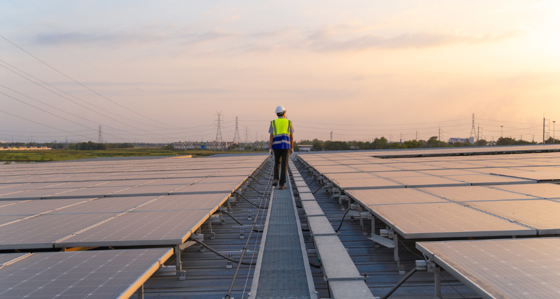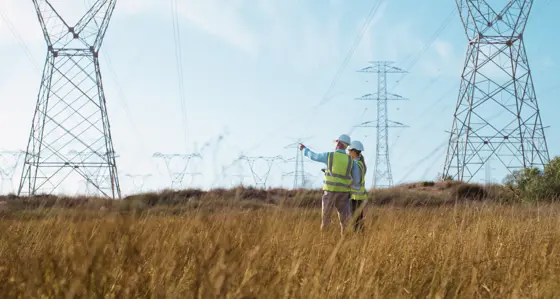
Delivery options for new nuclear power in Sweden
18 July 2024
Baringa has conducted a comprehensive study on financing and delivery models for new nuclear power in Sweden. The study was carried out for the Confederation of Swedish Enterprise (Svenskt Näringsliv) and considers Europe's return to nuclear power providing key recommendations for Sweden's nuclear new build plans.
Our consultants identified three models for Sweden's nuclear ambitions and explored risk sharing and risk mitigation. We were pleased to contribute to the ongoing dialogue on the future of nuclear power in Sweden during a public seminar in Stockholm. Please download the full presentation here.
Executive Summary
The study highlights the strategic choices regarding the delivery of new nuclear power and improves the knowledge base in the political debate. It provides guidance on which delivery models are most likely to be successful in the Swedish context. It considers how risks can be shared and mitigated between the private sector and the State in various delivery models and what lessons can be drawn from existing and planned nuclear programmes internationally.
The Confederation of Swedish Enterprise signaled a need for nuclear power to close a looming power supply gap. Historically, Sweden has benefited from an abundance of low carbon electricity, primarily due to its investments in hydroelectric power and nuclear energy, which have provided a stable and sustainable energy base. However, Sweden’s electricity consumption is projected to increase significantly to meet its net zero targets, driven by the electrification of transport, industry, and heating systems. This will require significant expansion of power generation across different technologies. Nuclear energy can play a significant role in meeting Sweden’s net zero transition challenges and building new nuclear should be considered as an important option for Sweden to achieve its net zero target.
After decades of limited levels of new build, the world is seeing a return to nuclear since ~2010 with many countries seeing nuclear energy as a reliable and safe form of low-carbon energy. The majority of the new construction projects are taking place in Asia, but Europe is seeing a strong increase too.
Various Generation III+ reactor designs have been approved by regulators internationally. With its focus on enhanced safety features, increased efficiency, and reduced construction costs it is now the default choice for new Large Scale Reactors (LSRs). Small Modular Rectors (SMRs) are a promising development for mid-term new build ambitions. They have not reached the same level of maturity as LSRs and should therefore not be on the critical path for Sweden to address its power generation challenges, but once cost-effective serialization has been achieved, they could provide an interesting option either to provide energy to industrial clusters or as building blocks for LSRs.
Nuclear new build programmes are capital-intensive projects with long development and construction times as well as long operational timeframes. The high capital costs, long construction times, and resulting financial risks make market-led projects financed solely by the private sector not feasible in Europe. Sweden has demonstrated an ambivalent attitude towards nuclear power, contributing to an unclear policy situation. Consequently, it should therefore implement project derisking measures as well as risk-sharing mechanisms for residuals risks. The nature and implementation of these will depend to some extent on the selected delivery model but will typically at least include:
- Proportionate and predictable regulation
- Ensuring a mature design at the start of construction
- Effective project management
- Sharing of construction costs risk and market price risk.
Three potential delivery models appear to be viable for Sweden and should therefore be the focus of the Swedish Government:
- Utility-led project with state backing – Vattenfall’s and Fortum’s presence in the Swedish market and their engagement in feasibility studies for nuclear new build makes this an attractive option, both for a limited number of new nuclear power plants (NPPs) or as part of a larger programme (see next).
- State-led programme with multiple NPPs from a single vendor – The attractiveness of this model, which is pursued in Poland, France and the Netherlands, is largely contingent on the size of Sweden’s nuclear ambition and society’s support for strong government involvement can offer considerable benefits over (serialized) projects that are developed independently.
- International SMR programme – SMR vendors expect to deliver SMRs across Europe from a select number of strategically located “factories”. An international state-led programme could contribute to successful outcomes for Sweden via shared design and approval processes severely de-risk projects and lower per-unit costs resulting from larger production series.
These delivery options, individually or when combining a utility-led or state-led programme delivering multiple LSRs in the 2030s is combined with an international SMR-programme can lead to a successful delivery of the Swedish ambition in the late 2030s/early 2040s.
The impacts of Europe’s return to nuclear on Sweden’s nuclear ambitions can be both positive and negative: learning effects and economies of scale through international collaboration can reduce risks and cost, but also increase demand for scarce knowledge and resources.
Lagging somewhat compared to countries like the UK, France, Poland and the Netherlands, Sweden should now clearly state its nuclear ambitions, provide a clear policy trajectory and guiding principles around deployment to ensure vendors and manufacturers can start to plan for participating in its nuclear newbuild plans as well as build up a right-skilled, right-sized workforce to become an attractive partner for nuclear newbuild projects in what could become a seller’s market.
Our Experts

Related Insights

What might a reformed GB national power market look like under REMA?
Discover how a reformed national market is likely to include significant changes to current market arrangements, with material impacts for market participants.
Read more
Investing in uncertainty: European power market outlook 2025
Our latest outlook points to a more uncertain energy transition, shaped by political and economic volatility across Europe in the form of Trade Wars, Populism and Remilitarisation.
Read more
REMA and investing in GB power market under uncertainty
Learn about the opportunities and challenges of investing in the GB power market under uncertainty and how Baringa can help
Read more
Three ways in which increased volatility and flexibility are reshaping Spain’s energy market
Spain's energy market faces profound change due to curtailment, negative prices, and a recent blackout, discussed at our roundtable event.
Read moreRelated Client Stories

Shaping New Zealand’s energy transition conversation
How do you create a distributed energy model that draws on best practice from around the world but is also fit-for-purpose for New Zealand?
Read more
Electricity network operator: securing critical national infrastructure with hybrid defences
Breaking new ground with a hybrid security approach.
Read more
Maximising impact from AI investment for a global energy leader
Discover how a series of experiential learning events resulted in employee confidence in AI skills hitting 85%.
Read more
Maintaining the stability of the New South Wales power system
How do you ensure the future stability of the NSW power system?
Read moreIs digital and AI delivering what your business needs?
Digital and AI can solve your toughest challenges and elevate your business performance. But success isn’t always straightforward. Where can you unlock opportunity? And what does it take to set the foundation for lasting success?